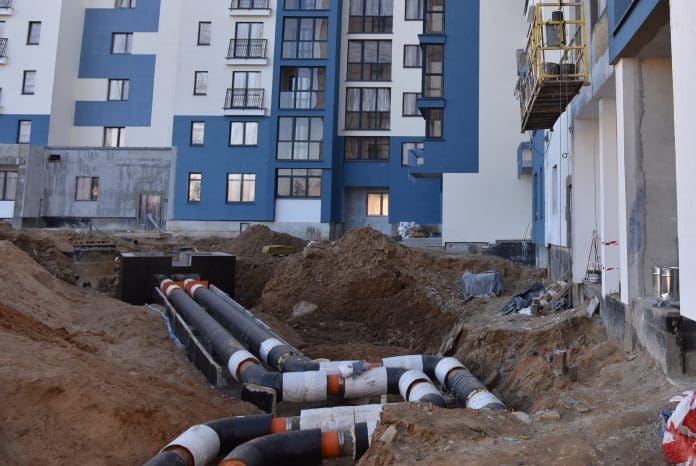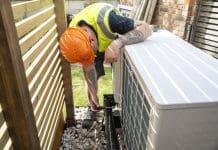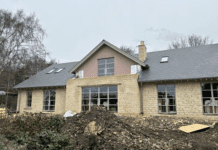Heat networks are a perfect fit for healthcare estates as the NHS looks for efficient strategies to achieve net zero goals, says Leigh Carter and Benjamin Smith of Turner & Townsend
NHS England has outlined its ambition to become the world’s first net zero national health service but questions still remain as to how trusts can achieve their targets.
Decarbonisation deadlines are looming and despite the progress that has been made across the NHS, healthcare executives must start looking to new and more efficient strategies to help meet these goals.
Heat networks (HNs) can be part of this solution. HNs supply heat from a central source to individual properties via a network of underground pipes carrying hot water.
Their design means that they offer low-cost, low-carbon heating options by capturing or generating heat locally, distributing it through a network and connecting multiple buildings. This often lends itself to public sector estates, such as schools, campuses and hospitals as they are able to provide critical mass for a network to become feasible.
Heat networks are a perfect fit for healthcare
Heat networks are incredibly well-suited to the demands of healthcare estates. The infrastructure is able to create opportunities to improve efficiency by providing otherwise inaccessible sources of energy.
HNs are also able to capture waste heat and redistribute it at peak times. Furthermore, they can be tailored to accommodate the uniqueness of each site and take advantage of the topography and surrounding buildings to share energy.
The HN can be adapted to work with and draw from a range of heat sources, such as combined heat and power, heat pump technology or captured waste heat from sources such as data centres. The UK government has made great progress in offering funding to support this transition, which trust executives can take advantage of.
This funding landscape is complex but manageable, and there are multiple streams to target. The Heat Network Delivery Unit was established to provide grant funding and guidance for organisations such as local authorities and NHS trusts that wish to develop a heat network.
If trusts are to meet the centrally imposed targets, they must urgently begin drawing up plans to decarbonise and take advantage of this strong government support.
Maintaining awareness of the challenges of heat networks
While HNs will not always be the most appropriate solution, even for scenarios where they are, there will naturally be challenges associated with this transition.
One of the most prevalent issues will be to address the shortage of skills and knowledge within the construction sector to deliver projects of this nature.
The UK government has endorsed the Climate Change Committee’s estimate that, by 2050, 18% of the country’s heat will be generated by HNs – making the royal assent of the Energy Bill, which is in its final stages, particularly significant.
It is the hope of the sector that the bill will trigger a wave of renewed interest in the technology and therefore competition for what are currently relatively scarce, specialist skills. For this vital infrastructure to succeed, we must work to upskill our industry to ensure its successful delivery.
Part of this forward-thinking approach will also be to consider futureproofing design and plan the capacity needed now, and in the years to come.
The other aspect that needs to be considered is the importance of securing wider investment to maximise upgrades to NHS trusts. Improving energy distribution is only one part of the puzzle. We also need to maximise efficiency of buildings relative to both heating and cooling, which can be achieved through initiatives such as retrofitting of more efficient technologies and fabrics.
Healthcare estates must often deal with significant backlogs for maintenance work with the NHS reporting, as part of its 2021-2022 Estate Returns Information Collection (ERIC) report, that the cost to eradicate the backlog would be £10.2bn. This can ultimately affect the performance of hospitals for patients. If new investment in HNs is considered alongside broader expenditure then it can ensure that funds are deployed to their full potential.
There will be challenges to installing HNs. However, with the right strategies in place, these difficult situations can be accounted for and accommodated.
Thinking for the future
Designing, funding and delivering heat networks relies on understanding the challenges relating to their integration. It will require navigating and capitalising government funding, upskilling the industry and working alongside broader investment sources.
However, this will be immensely rewarding for healthcare estates. If implemented correctly, it will establish low-carbon, resilient heat networks that will play a critical role in the NHS’s road to net zero.
Leigh Carter
Director and North-West healthcare lead
Benjamin Smith
Senior project manager, real estate UK
Turner & Townsend
Tel: +44 (0)20 7544 4000

















